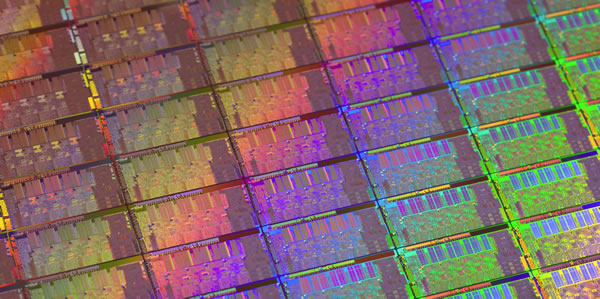Around this time last year we ran a story with some fun facts about Intel's then debutant 32nm manufacturing technology. For example, we learned that a 32nm transistor can switch on and off over 300 billion times in one second, conversely it would take a human 4000 years to flick a light switch on and off that many times. On a similar fashion, Intel compared the pace of innovation in space travel. Had it increased at the pace of Moore's Law since 1971, you would now be able to travel at the speed of light, 671 million miles per hour.
For the launch of their 2nd-gen Core CPUs (a.k.a. Sandy Bridge), Intel have compiled another interesting list of fun facts in a whitepaper. We have selected the ones we find more amusing and are republishing them here with Intel's permission:
- There are close to 1 billion transistors inside a 2nd Generation Intel Core processor. If a car were to have 1 billion parts - compared to the 30.000 they currently have - it would take the most productive car manufacturer 114 years to assemble this car.
- If a processor were a country and its transistor count was a country's population, a 2nd Generation Intel Core processor would be the third most populated country in the world (995 million+) just behind China and India.
- A 2nd Generation Intel Core processor contains 540 million more transistors than the number of registered cars in the European Union, the United States and the Asia Pacific region combined.
- If you equate the power consumption of a laptop based on the 2nd Generation Intel Core processors to an electric clothes dryer, drying one load for 60 minutes is equivalent to running a laptop for 147 hours or 6 days and 2.4 hours. If you compare the processor to an electric oven. baking a pizza for 45 minutes at 350 degrees (Fahrenheit) is equivalent to running 67 laptops for 50 hours.

- If every home in the United States had 30 light switches it would take the new chips about 1 nanosecond to turn on all 3.57 billion light switches.
- Compared to Intel's first microprocessor, the 4004, introduced in 1971, a 32nm CPU runs over 4.000 times as fast and each transistor uses about 4,000 times less energy. The price per transistor has dropped by a factor of about 100,000.
- The Intel Core processor is printed on very pure silicon, which is refined from common beach sand. So the sand you once stepped on at the beach may be powering your notebook today.
- The 2nd Generation Intel Core processor family is viewed by analysts as one of Intel's most important product cycles ever.**
On that last bullet, even though it sounds a lot like marketing speak, we tend to agree (and apparently you do, too).
As we found in our review last week, Sandy Bridge is in a lot of ways a continuation of Intel's well laid plan and not a revolutionary chip in terms of raw performance output. However, the implications it will carry on mobile PCs this year and in the near future are significant. Finally decent integrated graphics and another big leap in efficiency. For the first time in 2+ years I feel like replacing my laptop (beyond a much recommended SSD upgrade) could be definitely worth it.